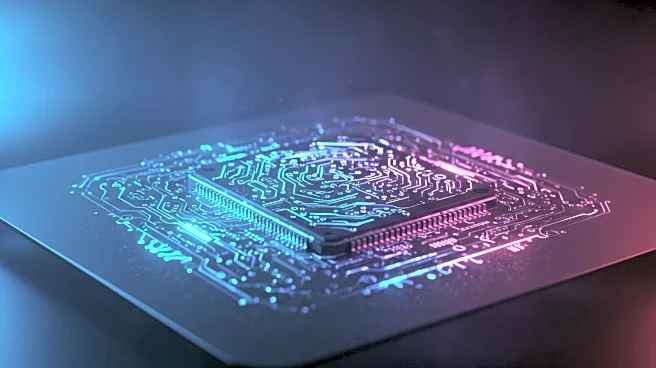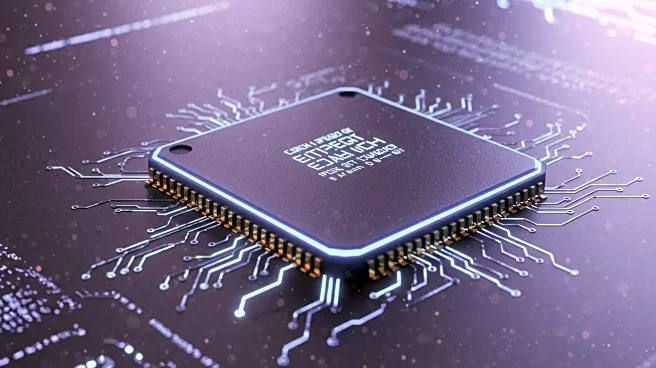What is the story about?
What's Happening?
Recent advancements in photoluminescent (PL) technology have led to the development of smart phosphor systems with neuromorphic behaviors, enabling full-photoluminescent Write and Read operations for all-optical physical reservoir computing. This innovation is inspired by biological synapses and aims to emulate synaptic plasticity and adaptability for more efficient information processing. The system, known as MHPe@MYE, utilizes a porous composite structure to facilitate light-induced PL property variations and recovery in dark states. This allows for dynamic PL features and on-demand Read operations, which are crucial for practical PL-based neuromorphic computing. The integration of Read operations in PL-based systems relies on materials whose light-induced property changes can give rise to PL variations with neuromorphic characteristics, along with a non-destructive probing mechanism to read out the current PL state.
Why It's Important?
The development of PL-based neuromorphic systems represents a significant step forward in computing technology, offering potential advantages over traditional electrical and optoelectrical systems. These systems provide high information bandwidth and visualizable results, which are essential for handling the increasing data volumes generated by the Internet of Things. The ability to perform Write and Read operations using light rather than electrical signals could lead to more energy-efficient and faster computing processes. This technology could revolutionize fields that require complex computations with ultra-low latency, such as artificial intelligence and machine learning, by providing a new method for data processing that mimics the human brain's synaptic functions.
What's Next?
Future developments in PL-based neuromorphic computing will likely focus on enhancing the efficiency and adaptability of these systems. Researchers may explore new materials and structures to improve the PL properties and neuromorphic behaviors of smart phosphors. Additionally, integrating these systems into existing computing architectures could pave the way for hybrid computing models that leverage both optical and electrical signals. As the technology matures, it could lead to the creation of more advanced artificial intelligence systems capable of processing information in a manner similar to human cognition.
Beyond the Headlines
The ethical and societal implications of neuromorphic computing are significant. As these systems become more advanced, they could challenge existing notions of machine intelligence and autonomy. The potential for machines to process information in a human-like manner raises questions about the future of human-computer interaction and the role of artificial intelligence in society. Additionally, the development of energy-efficient computing systems aligns with global efforts to reduce energy consumption and environmental impact, highlighting the importance of sustainable technology innovation.
AI Generated Content
Do you find this article useful?











